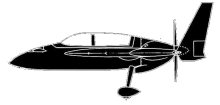
ASN Wikibase Occurrence # 201179
This information is added by users of ASN. Neither ASN nor the Flight Safety Foundation are responsible for the completeness or correctness of this information.
If you feel this information is incomplete or incorrect, you can submit corrected information.
| Date: | Saturday 11 November 2017 |
| Time: | 09:35 |
| Type: |  Rutan Long-EZ |
| Owner/operator: | Private |
| Registration: | N754T |
| MSN: | 1763-L |
| Year of manufacture: | 2015 |
| Total airframe hrs: | 177 hours |
| Engine model: | Lycoming O-235-L2C |
| Fatalities: | Fatalities: 0 / Occupants: 2 |
| Aircraft damage: | Substantial |
| Category: | Accident |
| Location: | Weedon Field Airport (KEUF), Eufaula, AL -
 United States of America United States of America
|
| Phase: | Landing |
| Nature: | Private |
| Departure airport: | Marianna, FL (MAI) |
| Atlanta, GA (FFC) | |
| Investigating agency: | NTSB |
| Confidence Rating: |
The private pilot was conducting a personal flight in an experimental airplane. While in cruise flight, the airplane “violently began shuddering,” and the pilot immediately shut down the engine and attempted an emergency landing. The airplane was unable to reach the selected runway and landed about 200 ft short of the runway threshold in a rough, grassy area. After exiting the airplane, the pilot discovered that a portion of the trailing edge of the wood propeller had separated and penetrated the lower half of the right rudder control surface.
A postaccident examination of the remaining portion of the wood propeller determined that the propeller was manufactured from laminations of defect-free hard maple lumber that showed no signs of decay. An inspection of the separation surface indicated that the individual layers of the propeller were laminated together using an adhesive that resulted in a light-colored bond line. The failure surface included an exposed portion of the bond line between two wood layers that had failed. Examination of this bond line showed minimal wood failure that was about 8 inches long and between 1/8 and 1/4 inch wide. The amount of cured adhesive observed varied considerably along the length of the failure surface’s bond line, with an area of the bond line having minimal adhesive coverage.
According to the propeller manufacturer, the propeller was carved by hand and assembled using an adhesive that is advertised as “ideal for interior wood application.” However, the adhesive had not been tested for applications in which extreme temperature fluctuations, pressure, and vibrations would be expected, such as those experienced during airplane operations.
Probable Cause: The in-flight separation of a portion of the propeller, which subsequently penetrated the right rudder, as a result of the failure of the bond line between two of the propeller’s wood layers. Contributing to the failure of the propeller was the manufacturer’s use of an inappropriate bonding agent.
Accident investigation:
 |
|
Sources:
NTSB
FAA register: http://registry.faa.gov/aircraftinquiry/NNum_Results.aspx?NNumbertxt=754T
Location
Revision history:
| Date/time | Contributor | Updates |
|---|---|---|
| 12-Nov-2017 01:36 | Geno | Added |
| 12-Nov-2017 20:18 | Geno | Updated [Registration, Cn, Operator, Departure airport, Source, Narrative] |
| 12-Jan-2018 06:52 | itljcloud | Updated [Narrative] |
| 28-Nov-2018 14:46 | ASN Update Bot | Updated [Time, Operator, Nature, Departure airport, Destination airport, Source, Damage, Narrative, Accident report, ] |
Corrections or additions? ... Edit this accident description
The Aviation Safety Network is an exclusive service provided by:


 ©2024 Flight Safety Foundation
©2024 Flight Safety Foundation